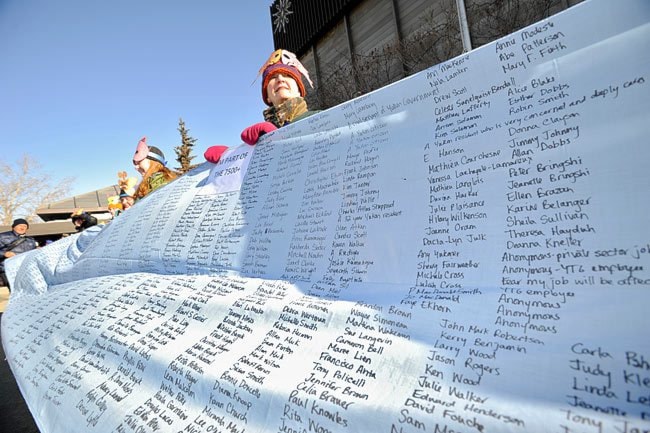Yukon’s First Nations are throwing their support behind a plan to protect the Peel Watershed.
Now the Tr’ondek Hwech’in, Na-Cho Nyak Dun and Vuntut Gwitchin are calling on miners and the territorial government to do the same.
“There are some areas we just can’t develop,” said Vuntut Gwitchin Chief Norma Kassi. “This is probably one of those places.”
The Peel Watershed Planning Commission wrapped up six years of work on Monday, when it released its final recommendations. The plan would protect four-fifths of the vast, Scotland-sized swath of northeast Yukon.
Now it’s up to the Yukon government and three affected First Nations to either accept, modify or reject the plan. The parties have agreed to a timetable that would see a final agreement signed by November.
Crucially, the plan would permanently protect the so-called Three Rivers area, which is at the heart of a pitched battle being fought between miners and conservationists.
The Snake, the Bonnet Plume and the Wind are favourite destinations for wilderness paddlers and mineral exploration companies alike.
Uranium deposits have been discovered along the Wind. There are coal seams along the Bonnet Plume. And Chevron owns the massive Crest iron deposit along the Snake.
Companies with existing claims would be allowed to develop. But no roads or railways would be permitted into these areas. That’s sure to rankle miners, who have warned that such a ban would render their claims unprofitable.
But miners are holding their tongues for now. Claire Derome, president of the Yukon Chamber of Mines, said her group is still reviewing the final plan, and she’s having difficulty reaching her members, who are currently out in the field.
Derome spoke at length about respecting the planning process and ensuring “balance” in any final plan, but wouldn’t offer specifics. That made her sound a lot like Mines Minister Patrick Rouble, who’s also refusing to offer any opinion on the plan.
However, it’s well known that both the mining lobby and the territorial government wanted a plan that protected a smaller portion of the Peel.
First Nations had until now called for a plan that would protect the entire watershed. They call their support of the final plan a fair compromise. Conservationists are also backing the plan, while noting that it doesn’t offer the degree of protection they sought.
The Peel debate has been acrimonious at times. But, as the parties prepare to negotiate, First Nations are pulling their punches.
In the past, First Nations have warned the territory could land in court if it didn’t bargain in good faith. And mining companies know that First Nations support can make or break their projects.
Already, some exploration outfits are steering clear of the Peel, in order to stay in the good books of First Nations, said Simon Mervyn, chief of the Na-Cho Nyak Dun.
Opposition parties have expressed fears that the territorial government plans to foot-drag on Peel talks until after the territorial election, which must be held by November. But Mervyn said he’s optimistic that a deal can be reached.
“First Nations people have a lot of patience,” said Mervyn. “Together, we can move mountains.”
Contact John Thompson at
johnt@yukon-news.com.
